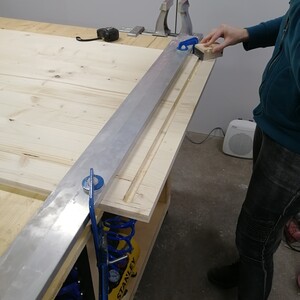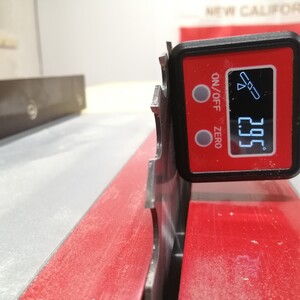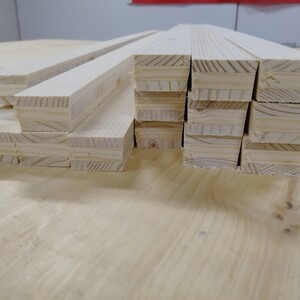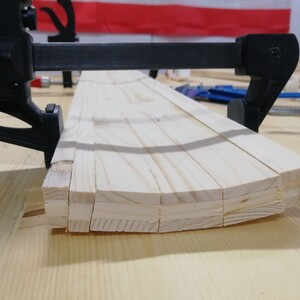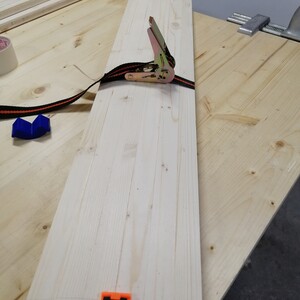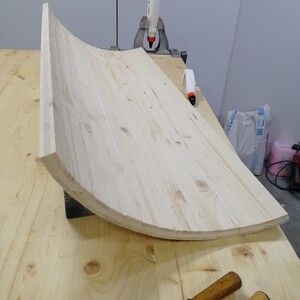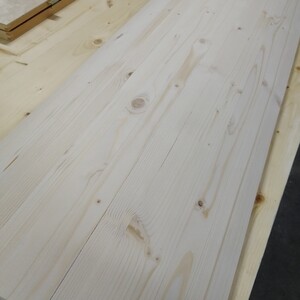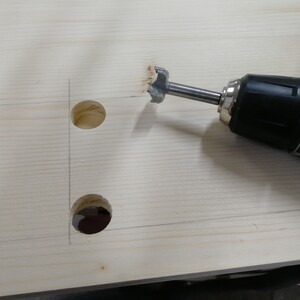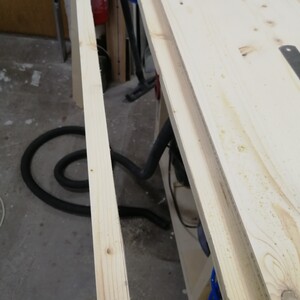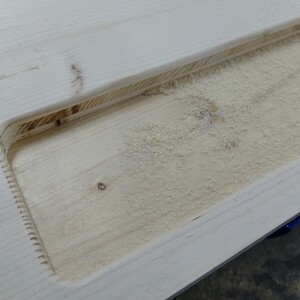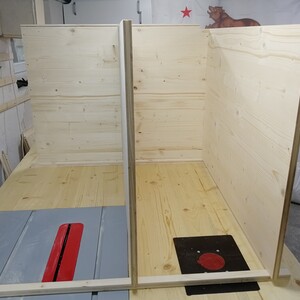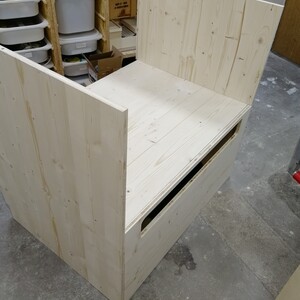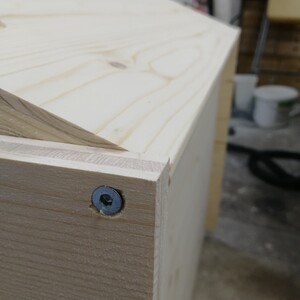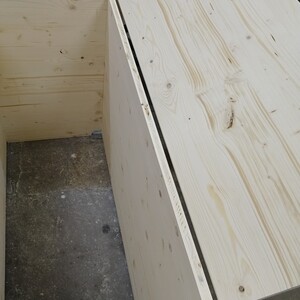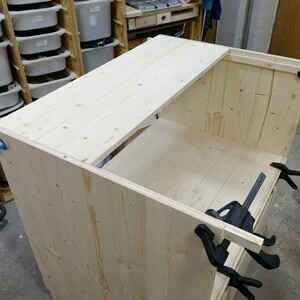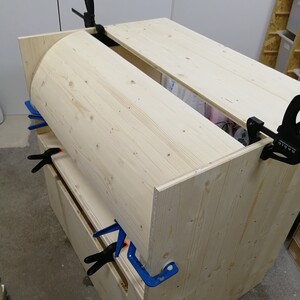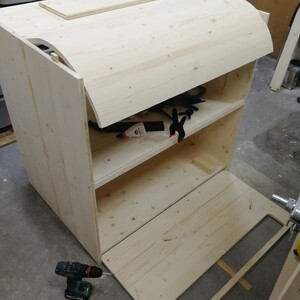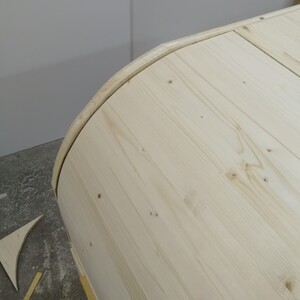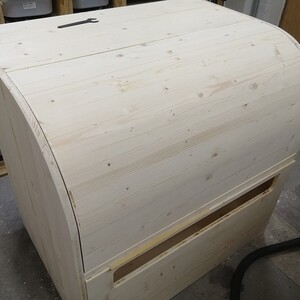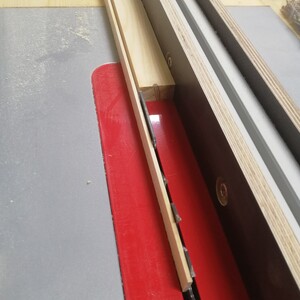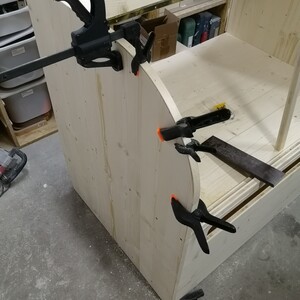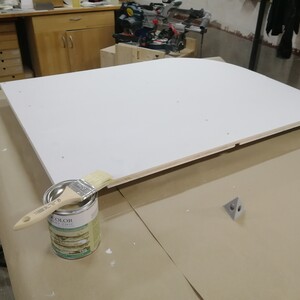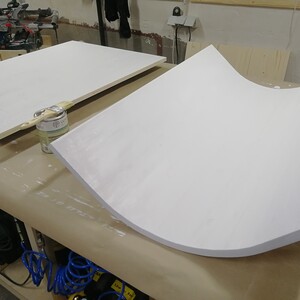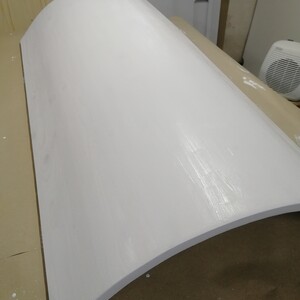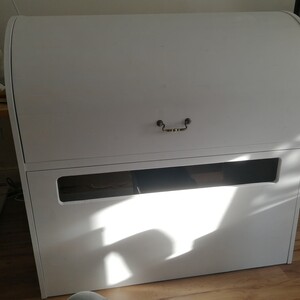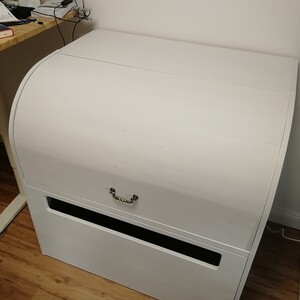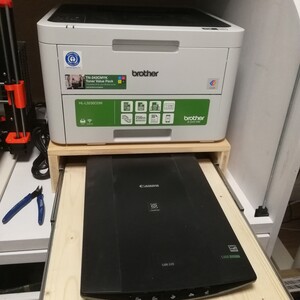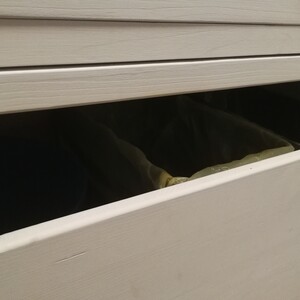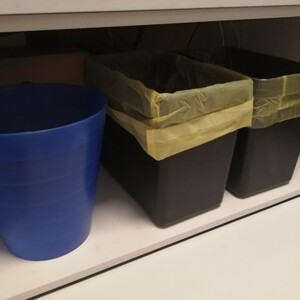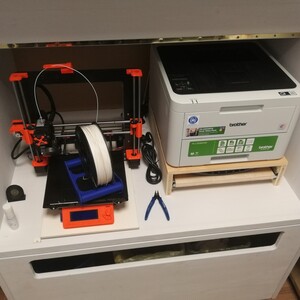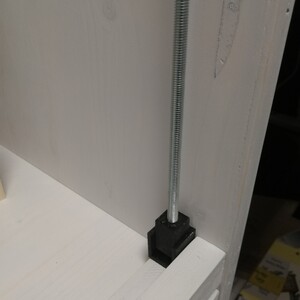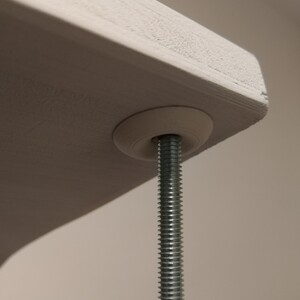Printer Cupboard
My wood working workshop is a great way to relax from all the pandemic home working madness we're in. However many of the things I made so far were smaller projects or improvements to the shop itself. So here's a bigger thing recently finished.
In our home office space we had an old IKEA dresser that served as the place to put the (2D) printer and the scanner on. But the 3 large drawers weren't particularly useful. We wanted something different. A custom built cupboard to hold the following:
- some not so often needed ring binders
- the 2D printer
- the 3D printer
- the scanner
- three trash cans1)
I wanted to protect the printers from dust when they are not used, so some kind of enclosed space was needed. But it shouldn't be too bulky either so we came up with a rounded lid:
The rounded lid was of course the most complicated part. How do you construct a round lid from flat wood? By assembling mitered stakes of course. But how many stakes and what angle do you need to create a round 90° corner? I only had a very rough idea on how to approach this, so I asked my girlfriend who is good at math and she came up with a useful spreadsheet for me. You enter the green values and it will calculate all the other values you.
For the lid we used 15 pieces with an outside length of 3cm angled at 3° on both sides. Cutting that is fun on the table saw. But gluing is another challenge.
I first glued the stakes together in bundles of 3, which was still possible using clamps and some off-cuts as “adapters”. For gluing the rest, I used some spots of CA glue and activator while the wood glue dried. The result wasn't perfect but good enough. In hindsight I think some painters tape might have helped as “clamps”.
The rest of the cupboard's construction is relatively simple. The two main shelves are set into rabbets made with the router. The door got a cut-out with the jigsaw and some cleanup with the router as well. Everything is held together with screws.
The lid is attached using a piano hinge. The door uses a hinge made from screw bolts and is held with two pretty strong furniture magnets.
The whole thing is constructed from 3 ply spruce, which is comparably cheap but dimensional stable. For the front of the sides I tried edge banding for the first time. I cut thin strips of spruce off a board and glued and stapled it to the front to cover the plies of the board. Worked quite well.
As a finish I wanted some kind of shabby chic look and used chalk paint. I'm not sure how much I like it yet - it seems not shabby enough. You're supposed to sand some of the color off again after it's dry and I might have been a bit too light on that post-sanding. Maybe I should take some rough sand paper to it again… The white is also a bit boring in front of the white wall, but we plan to paint the wall some time soon and I think it will look awesome then.
I hadn't really thought about how to keep the lid up when using the printers. But Kaddi had the clever idea of using the same mechanism car hoods use – a thin rod that can be rotated upwards. A few 3D printed pieces and a M6 all-thread implemented that easily and it works great.
For the scanner I built a little shelf that fits under the 2D printer. Two full-extension slides allow for accessing it when needed. And yes, I was too lazy to bother painting this shelf.
The next step will be a tall shelf that sits on top of the unit housing 3D printer filament storage and more space for the more often needed ring binders and some books.
And as always, here are some pictures of the build process:
